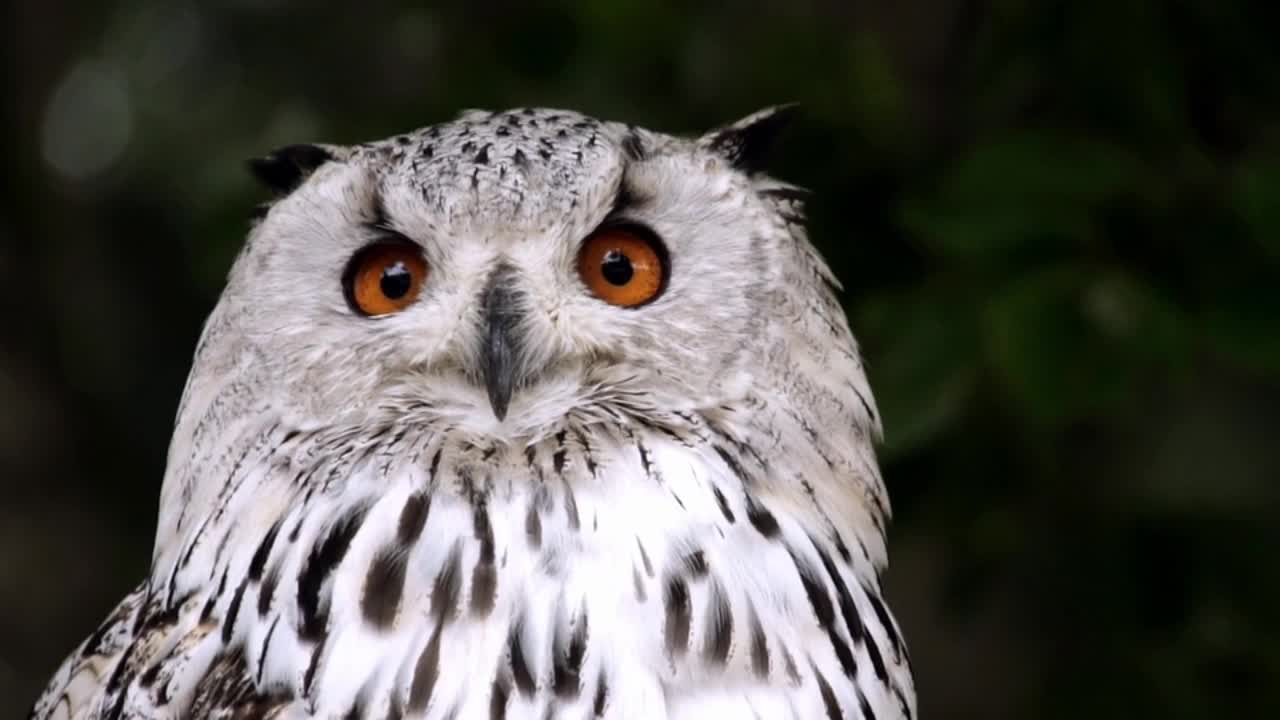Premium Only Content

Watch a Very Close View of a Beautiful Owl
Owls are birds from the request Strigiformes, which incorporates more than 200 types of generally lone and nighttime flying predators encapsulated by an upstanding position, a huge, expansive head, binocular vision, binaural hearing, sharp claws, and plumes adjusted for quiet flight. Special cases incorporate the diurnal northern bird of prey owl and the gregarious tunneling owl.
Owls chase generally little well evolved creatures, bugs, and different birds, albeit a couple of animal varieties have some expertise in chasing fish. They are found in all districts of the Earth aside from the polar ice covers and some far off islands.
A gathering of owls is known as a "parliament."
Owls are separated into two families: the valid (or normal) owl family, Strigidae, and the stable owl family, Tytonidae.
Owls have huge, front oriented eyes and ear-openings, a falcon like nose, a level face, and normally a prominent circle of plumes, a facial plate, around each eye. The quills making up this circle can be acclimated to pointedly center sounds from fluctuating distances onto the owls' lopsidedly positioned ear holes. Most flying predators have eyes on the sides of their heads, yet the stereoscopic idea of the owl's front oriented eyes allows the more prominent feeling of profundity discernment fundamental for low-light chasing. Despite the fact that owls have binocular vision, their enormous eyes are fixed in their attachments—just like those of most different birds—so they should blow some people's minds to change sees. As owls are farsighted, they can't obviously see anything inside a couple of centimeters of their eyes. Gotten prey can be felt by owls with the utilization of filoplumes—hairlike plumes on the bill and feet that go about as "sensors". Their far vision, especially in low light, is incredibly acceptable.
Owls can pivot their heads and necks as much as 270°. Owls have 14 neck vertebrae contrasted with seven in people, which makes their necks more adaptable. They likewise have transformations to their circulatory frameworks, allowing revolution without removing blood to the mind: the foramina in their vertebrae through which the vertebral corridors pass are around multiple times the distance across of the vein, rather than about a similar size as the conduit as in people; the vertebral courses enter the cervical vertebrae higher than in different birds, giving the vessels a little room to breath, and the carotid corridors join in a huge anastomosis or intersection, the biggest of any bird's, forestalling blood supply from being cut off while they pivot their necks. Different anastomoses between the carotid and vertebral conduits support this impact.
-
 2:44:29
2:44:29
TimcastIRL
8 hours agoBail DENIED For Leftist Who FIREBOMED Democrat Governor's Mansion, Mangione Effect | Timcast IRL
204K89 -
 24:05
24:05
Glenn Greenwald
12 hours agoAs U.S. Censorship Escalates, New Poll Reveals Declining Support for Israel: UNLOCKED Episode
147K122 -
 2:14:50
2:14:50
We Like Shooting
1 day ago $8.28 earnedWe Like Shooting 606 (Gun Podcast)
47.9K4 -
 1:00:41
1:00:41
Donald Trump Jr.
13 hours agoMake Main St Great Again, Interviews with Alex Marlow & John Phillips | TRIGGERED Ep.233
182K54 -
 1:45:23
1:45:23
megimu32
9 hours agoON THE SUBJECT: 2008 Called.. It Wants Its Chaos Back!
60.9K20 -
 1:01:53
1:01:53
BonginoReport
11 hours agoPolitical Violence on the Rise in America - Nightly Scroll w/Hayley Caronia (Ep.26) - 04/14/2025
154K98 -
 1:32:42
1:32:42
BlackDiamondGunsandGear
6 hours agoThey Don’t want you to Purchase 2A Related Products?
43.9K3 -
 2:53:36
2:53:36
Joe Pags
9 hours agoThe Joe Pags Show 4-14-25
105K -
 56:14
56:14
Sarah Westall
9 hours agoGlobal Agenda: Starve Small Business of Funds w/ Bruce De Torres
88.5K22 -
 2:17:29
2:17:29
2 MIKES LIVE
12 hours ago2 MIKES LIVE #205 with guest Nick Adams!
64.6K